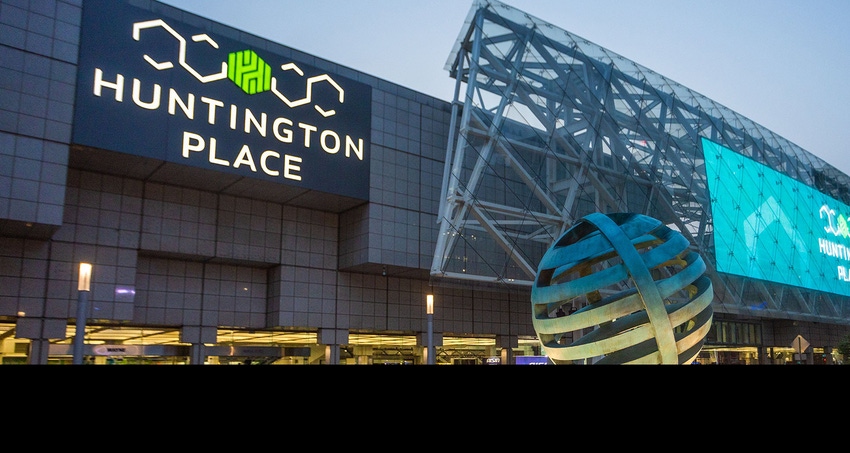The Ins and Outs of Sustainable Event Planning
Special events, whether industry trade shows or grass roots arts festivals, can breathe money and life into businesses and communities. They also generate huge volumes of trash—about 2.5 pounds of waste, per person, each day, by government and industry reports. Now consider that some gatherings run for days, with the largest of them drawing tens of thousands of attendees.

Special events, whether industry trade shows or grass roots arts festivals, can breathe money and life into businesses and communities. They also generate huge volumes of trash—about 2.5 pounds of waste, per person, each day, by government and industry reports. Now consider that some gatherings run for days, with the largest of them drawing tens of thousands of attendees. Do the math …
Yet people who flock to these venues seem to care about their environmental impact, whether they want to live in pollution-free communities or they’re paying attention to environmental, social, and governance.
Professionals have said they want event planners to prioritize sustainability; it’s at the top of their list of expectations (along with diversity/inclusion and accessibility), according to more than a thousand respondents of a survey done by Hubilo Technologies, specializing in virtual and hybrid event management technology. Millennial event-goers (ages 30-44) especially say they care about the environment and want to be seen as having this ethos.
As the sustainability chatter amplifies, zero-waste events are catching on, and their success hinges on understanding their audiences.
Clear communication, active engagement, and visible sustainability practices are critical, says McCall Vrydaghs, director of Corporate Communication, Keep America Beautiful.
“Understanding resulting emissions has become more common as organizers, hosts, and even attendees seek to reduce the carbon and broader environmental impact of in-person events,” says Alyssa Rade, chief sustainability officer, Sustain.Life, a company that supports businesses in calculating their carbon emissions.
For industry, with planning and foresight, businesses can host conferences and design events with minimal environmental repercussions.
When assessing impact, Rade advises considering attendee travel, which often accounts for the most emissions due to air travel. Consider energy use of the hosting facility and auxiliary power sources, as well as upstream impacts of food and beverage (tip: meat has a far greater carbon footprint than vegetarian offerings). Also account for waste generated and diversion efforts, as well as auxiliary goods and materials used to facilitate the event (e.g., booth set-up and swag.)
All of these details will impact hosts’ scope 3 emissions, unless they own the facility or equipment, Rade says.
Sustain.Life actually built a calculator dedicated specifically to quantifying emissions from corporate/business events.
One of the first steps is choosing a site. Going with a central location makes sense; this will help curb the emissions from jetting to and from.
Now that the hosting city or town is established, home in on venues set up with sustainability in mind and track records in this space. Do they have ISO 14001 and/or LEED Gold certification? How else do they show their commitment to the environment?
Among the highest ranking venues on the green-operations front are: Colorado Convention Center, Denver; Moscone Center, San Francisco; Oregon Convention Center, Portland; San Diego Convention Center; and Huntington Place (formerly TCF Center), Detroit, Michigan.
They have invested in carbon-cutting measures from solar rooftops; to air conditioning that runs on recycled river water; to aggressive recycling targets (50% or better) achieved through approaches like strategic placement of recycling bins, trash, and compost bins, and water fill bottle stations. They send leftover food to local nonprofits and push green transportation whether by establishing anti-vehicle idling policies, setting up on-site bike share stations, free parking for hybrid and electric vehicles, and/or incentivizing use of public transit.
Festivals and community events typically attract a diverse audience—
families, individuals, and groups with different levels of awareness about zero-waste and sustainability.
In contrast, conferences are typically smaller and target specialized audiences such as industry professionals, researchers, state and local leaders who often have a better grasp of zero-waste concepts, notes Vrydaghs.
To meet folks where they are, community events prioritize engaging attendees through interactive activities and participation incentives, while professional events emphasize education, networking, and showcasing eco-friendly practices as models of sustainability.
Incentives can encourage attendee participation; big draws are discounts or prizes in exchange for active involvement in the way of social media engagement, sharing, and feedback through surveys.
Begin planning early, telling attendees your sustainability goals and their options to help you reach those goals. And make their options visible, Vrydaghs says.
Set up recycling and composting stations with clear labels throughout the venue. Have volunteers or staff on hand to explain proper waste disposal.
And even earlier, find vendors experienced in zero-waste practices, especially waste haulers and caterers who know the ropes. Use compostable or reusable tableware and offer options for composting and recycling food waste.
Keep the sustainability theme in front of attendees by offering eco-friendly merchandise. Reusable tote bags, stainless steel water bottles, and bamboo utensil sets tend to go over big.
Once the event is over there’s more that can be done to keep the momentum going, Vrydaghs says.
Celebrate and acknowledge outcomes, sharing them on company websites, through emails, and social media posts. Accolades reinforce that attendees’ time was well invested. And ask them for their feedback, showing them that their opinions could be important in shaping plans for future gatherings.
Customer demand for sustainable events is driving innovations. They run the gamut. Better ways to green convention centers. The forging of new partnerships, maybe with companies that do e-bike tours, local composters, or charities that put a glut of would-be waste to good use.
And then there’s one powerful, old-fashioned payoff: good PR. Large conferences and town gatherings are a time and place for communities and corporates to show—not just say—that they put their money and time into supporting the health of the planet.
About the Author(s)
You May Also Like




